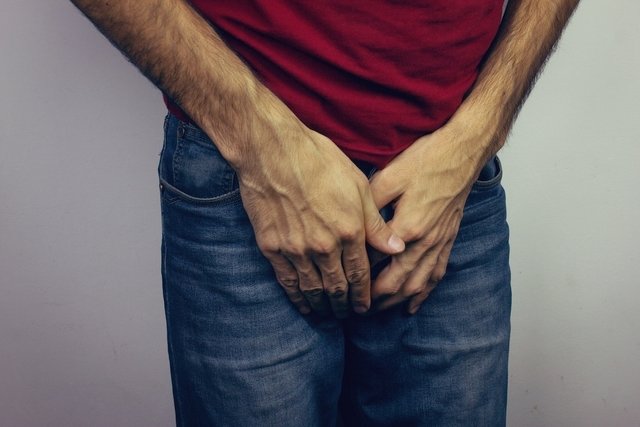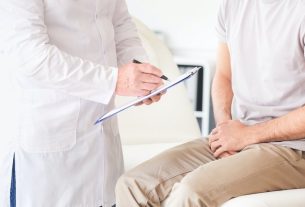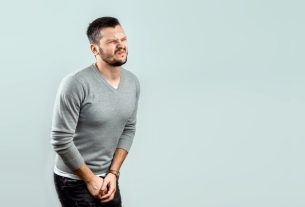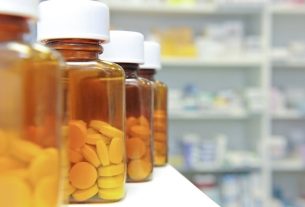Testicular torsion is an emergency situation in which the testicle twists around the spermatic cord, reducing blood circulation and can cause serious injuries if not identified and treated quickly.
Although uncommon, testicular torsion is most common in babies under two years of age or children between the ages of 12 and 18. The main symptom of testicular torsion is intense pain that appears suddenly and can radiate to the groin. In addition, there may also be swelling and redness of the scrotum.
In the presence of suspected symptoms of testicular torsion, it is important to go to a medical emergency room immediately to confirm the diagnosis and begin the most appropriate treatment, which usually includes surgery.

Testicular torsion symptoms
Testicular torsion can cause signs and symptoms such as:
- Severe and sudden pain in the testicles;
- Swelling of the scrotum;
- Increased sensitivity in the scrotum;
- Presence of one testicle higher than the other;
- Pain in the belly or groin;
- Nausea and/or vomiting;
- Fever.
Torsion of the testicle in children and adolescents is more common at night and, in these cases, it is common for the pain to be so intense that it wakes the boy from sleep.
When symptoms indicative of testicular torsion appear, it is recommended to go to the emergency room as quickly as possible for a medical evaluation and physical examination.
How to confirm the diagnosis
The diagnosis of testicular torsion is made by a urologist through a physical examination of the testicles, scrotum, groin and abdomen, and assessment of symptoms.
Furthermore, to confirm the diagnosis, the doctor may order tests such as testicular ultrasound and urinalysis to check for the presence of an infection, and rule out other health conditions that may have similar symptoms, such as epididymitis, orchitis, hydrocele or tumor.
Main causes
The main cause of testicular torsion is poor implantation of the tissue that supports the testicles, allowing them to rotate freely within the scrotum and leading to torsion.
However, testicular torsion can also appear after trauma to the testicles during adolescence, when growth is very rapid, or be a consequence of frequent sporting activities that increase the risk of torsion, such as cycling or skating, for example. Learn about other possible causes of testicular pain.
How the treatment is carried out
Treatment for testicular torsion must be done as quickly as possible in a hospital with surgery to place the testicle in the correct position and allow blood to pass through, preventing the organ from dying.
Surgery to twist the testicle is performed under spinal anesthesia and, normally, it is only necessary to remove the affected testicle if more than 6 hours have passed since the onset of symptoms and it shows signs of ischemia and necrosis. However, in these cases, infertility is rare as the problem rarely affects both testicles, allowing one healthy testicle to be maintained.
In some cases, the doctor can perform manual distortion, however only in cases where the person can bear the pain. However, manual distortion does not represent a definitive treatment, as the testicle may twist again and, therefore, the most recommended treatment is surgery.
Bibliography
- SHARP, V. J.; et al. Testicular torsion: diagnosis, evaluation, and management. Am Fam Physician. 88. 12; 835-40, 2013
- KEAYS, M.; ROSENBERG, H. Testicular torsion. CMJ. 191. 28; E792, 2019
- KUMAR, M.; GAUTAM, V. Testicular Torsion. N Engl J Med. 385. 17; 1603, 2021
- SCHICK, M. A.; STERNARD, B. T. IN: STATPEARLS (INTERNET). TREASURE ISLAND (FL): STATPEARLS PUBLISHING. Testicular Torsion. 2022. Available at: <https://www.ncbi.nlm.nih.gov/books/NBK448199/>. Accessed on September 12, 2022
- LOPES, MAURO T.; SOUZA, NOSLEN R.; NETO, VICENTE C.; NORONHA, JORGE ANTÔNIO P. Testicle torsion. Available at: <https://docs.bvsalud.org/biblioref/2018/04/882867/torcao-de-testiculo-artigo-de-revisao.pdf>. Accessed on May 11, 2021

Sign up for our newsletter and stay up to date with exclusive news
that can transform your routine!
Warning: Undefined array key "title" in /home/storelat/public_html/wp-content/plugins/link-whisper-premium/templates/frontend/related-posts.php on line 12
Warning: Undefined array key "title_tag" in /home/storelat/public_html/wp-content/plugins/link-whisper-premium/templates/frontend/related-posts.php on line 13



